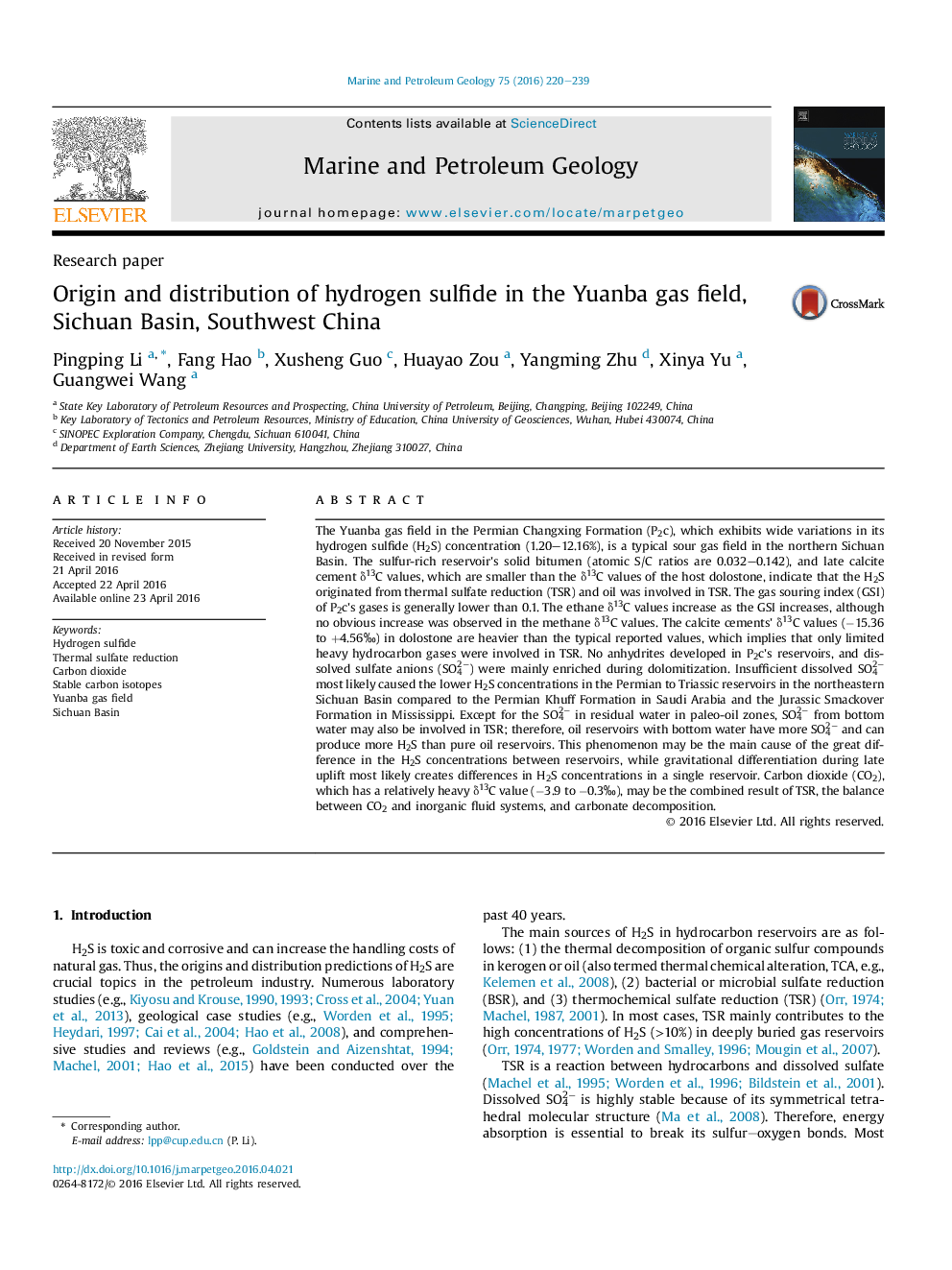| کد مقاله | کد نشریه | سال انتشار | مقاله انگلیسی | نسخه تمام متن |
|---|---|---|---|---|
| 6434358 | 1637152 | 2016 | 20 صفحه PDF | دانلود رایگان |
- Oil-involved TSR and limited heavy-hydrocarbon gases-dominated-TSR occurred.
- Methane-dominated TSR did not occur.
- The sulfates were mainly enriched SO42â during the dolomitization.
- Gravitational differentiation probably caused H2S concentration differences in a reservoir.
The Yuanba gas field in the Permian Changxing Formation (P2c), which exhibits wide variations in its hydrogen sulfide (H2S) concentration (1.20-12.16%), is a typical sour gas field in the northern Sichuan Basin. The sulfur-rich reservoir's solid bitumen (atomic S/C ratios are 0.032-0.142), and late calcite cement δ13C values, which are smaller than the δ13C values of the host dolostone, indicate that the H2S originated from thermal sulfate reduction (TSR) and oil was involved in TSR. The gas souring index (GSI) of P2c's gases is generally lower than 0.1. The ethane δ13C values increase as the GSI increases, although no obvious increase was observed in the methane δ13C values. The calcite cements' δ13C values (â15.36 to +4.56â°) in dolostone are heavier than the typical reported values, which implies that only limited heavy hydrocarbon gases were involved in TSR. No anhydrites developed in P2c's reservoirs, and dissolved sulfate anions (SO42â) were mainly enriched during dolomitization. Insufficient dissolved SO42â most likely caused the lower H2S concentrations in the Permian to Triassic reservoirs in the northeastern Sichuan Basin compared to the Permian Khuff Formation in Saudi Arabia and the Jurassic Smackover Formation in Mississippi. Except for the SO42â in residual water in paleo-oil zones, SO42â from bottom water may also be involved in TSR; therefore, oil reservoirs with bottom water have more SO42â and can produce more H2S than pure oil reservoirs. This phenomenon may be the main cause of the great difference in the H2S concentrations between reservoirs, while gravitational differentiation during late uplift most likely creates differences in H2S concentrations in a single reservoir. Carbon dioxide (CO2), which has a relatively heavy δ13C value (â3.9 to â0.3â°), may be the combined result of TSR, the balance between CO2 and inorganic fluid systems, and carbonate decomposition.
Journal: Marine and Petroleum Geology - Volume 75, August 2016, Pages 220-239
